Semi Leotax
Like USSR and China, the Japanese optical industry started off copying cameras of the successful German company Leitz and Carl Zeiss. It's therefore a fun thing to compare the copies with the original.
Semi Leotax is a Zeiss Ikon Nettar 515 copy made by Showa Optica Works between 1940s and 1950s. The Nettar 515's body design was also used on Ikonta 520 and Bob 510 so it is slightly confusing to distinguish them. Only the Ikonta is equipped with a superior Tessar lens while the others come with the inferior triplet lenses. These are medium format cameras shooting 6×4.5cm negatives.
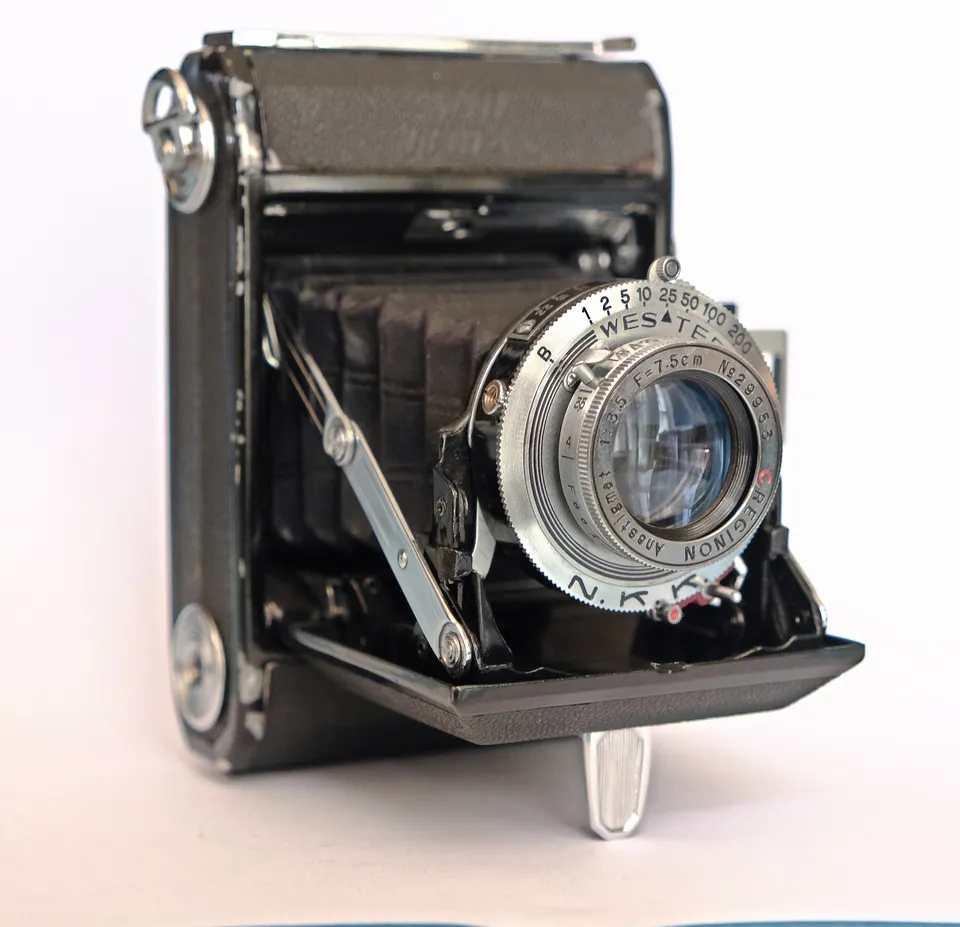
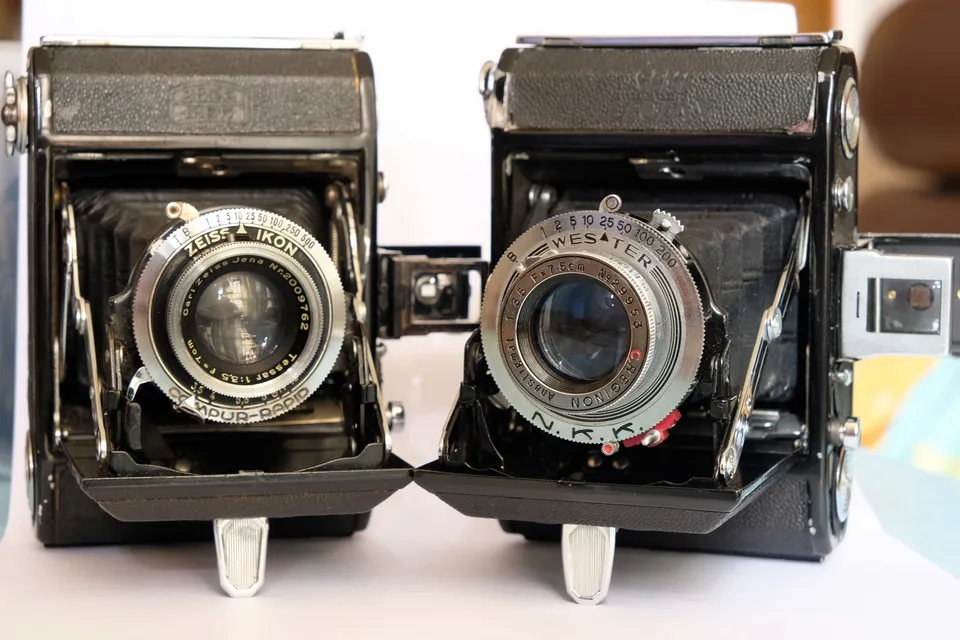
By comparing the back of Semi Leotax and Ikonta 520 which are a decade apart in production date, a clear split in era can be identified. Study the number and position of red windows which indicates frame number as the photographer advance the film. The markings used by Semi Leotax (upper left) is the markings dedicated for 6×4.5 frame size. On the other side, Ikonta 520 (lower right) uses the markings for 6×9 frame size, so the same frame number goes through the two window for 2 shots. This is because in 1937 when this Ikonta 520 was produced, 6×4.5 hasn't been made a standard in 120 films. In the 1940s, Semi Leotax leverages the frame markings for 6×4.5, thus requiring only a single red window.
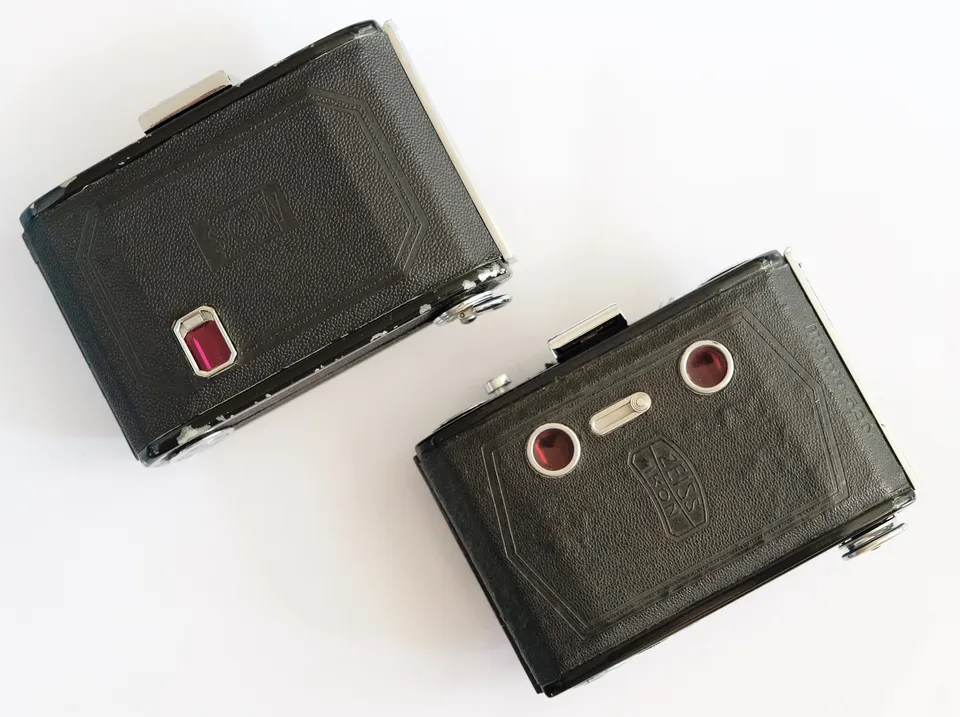
Before obtaining this camera, I didn't know there exist folders that shoot 6×4.5cm size. These folders are basically half-frame cameras not unlike AGAT 18K or Olympus Pen in medium format sense (half of a 6×9 frame, thus the name "Semi"). How come people ditch this compact form factor (I can easily put Semi Leotax into my back pocket, and I did) for all the modern offerings are either masked 6×6, irregularly shaped rangefinder (Fujica GS645), or bulky SLRs (Mamiya 645).
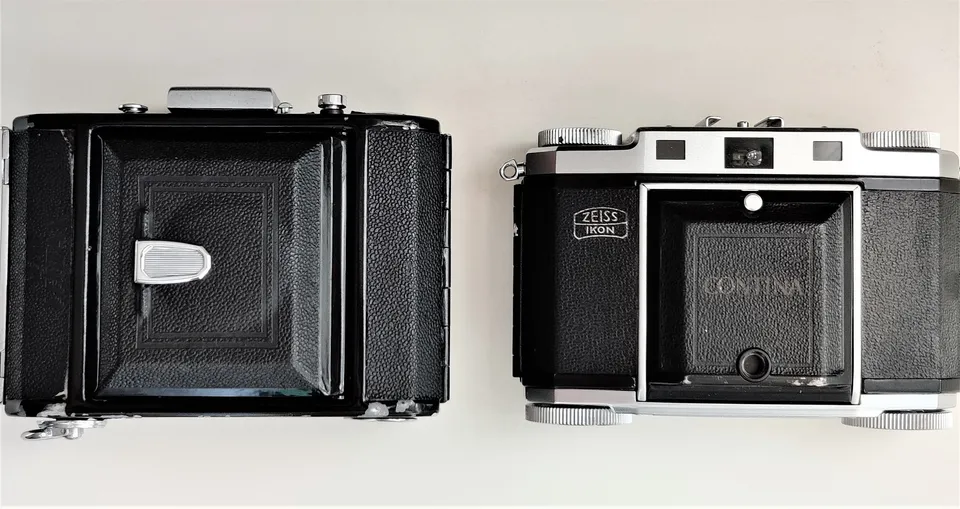
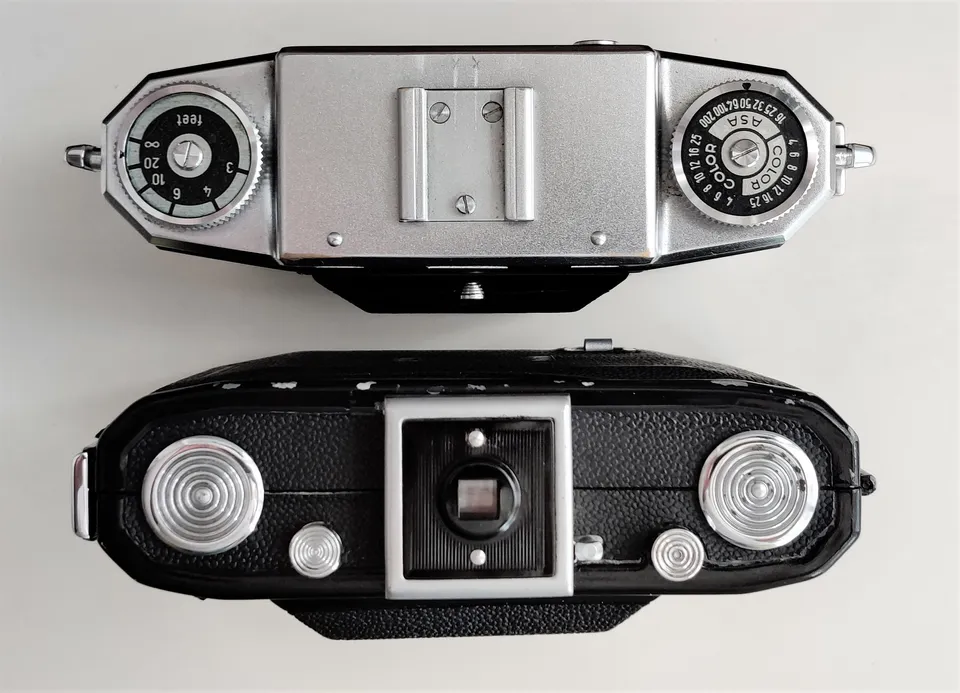
In fact, Semi Leotax is so compact its size is comparable with Contina II that shoots 135 film, while being able to churn out negatives with higher resolutions—if the C. Reginon Anastigmat triplet lens could perform at least on-par with Contina II's Tessar lens…
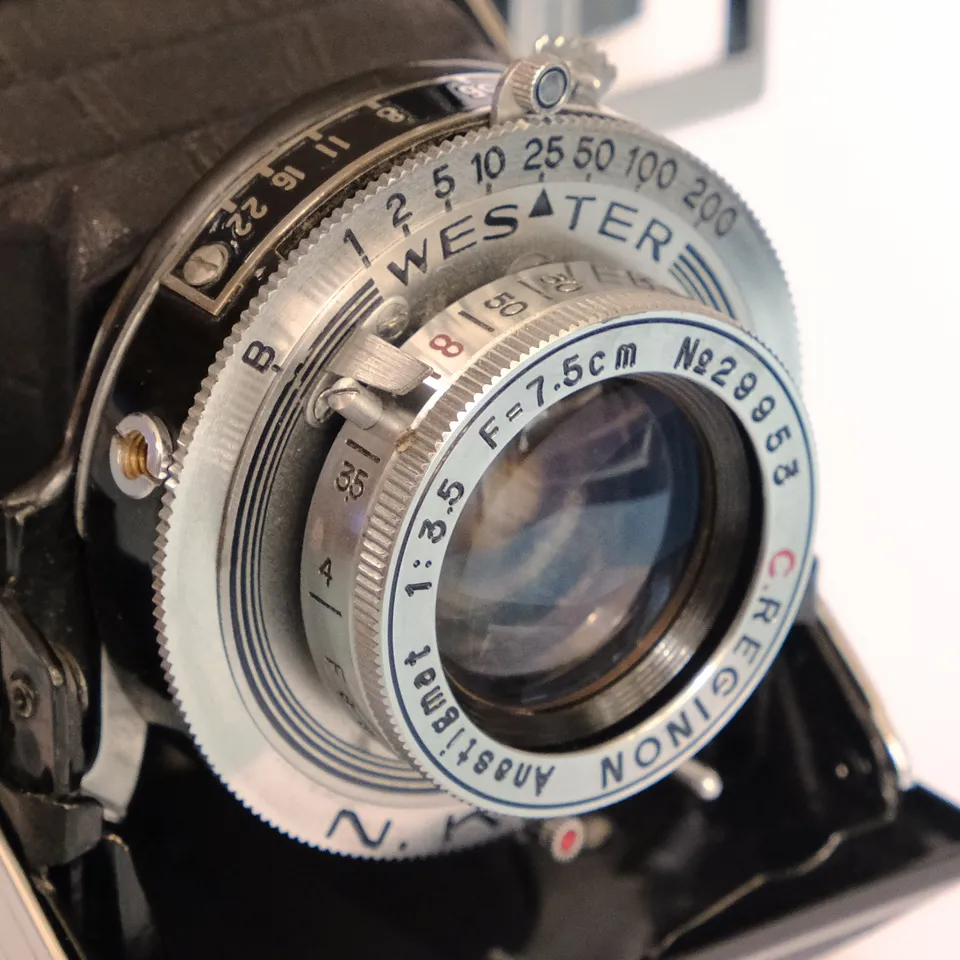
Operation of the Semi Leotax is simple. There are two buttons on top—the right button pops open the front and the sportsfinder and the left button activates a lever mechanism that fires the shutter.
Before making an exposure, use the trusty rangefinder card or the built-in rangefinder of Contina II to measure the distance to the subject. Guess focusing may also be used at high aperture stops. Like typical triplets, turn the front element to adjust focus and match the markings on the ring with the blade-like stopper. Measure the appropriate aperture/shutter speed combo using an external light meter.
For leaf shutter it's advisable to select shutter speed before cocking the shutter. Don't forget to adjust the apreture ring to select an aperture. Press the button on top-left of the camera to fire the shutter. The shutter release button position takes some getting used to like on the Moskva-5.
The cable release thread locates on the lens assembly, visible in the photo above. The release cable pushes the piece of thin metal connected to the shutter release lever which may be pushed out of place, causing the shutter release to mis-align and stay stucked. I didn't try the self-timer, assuming it's sticky at best, like the slow shutter sleed 1-1/10.
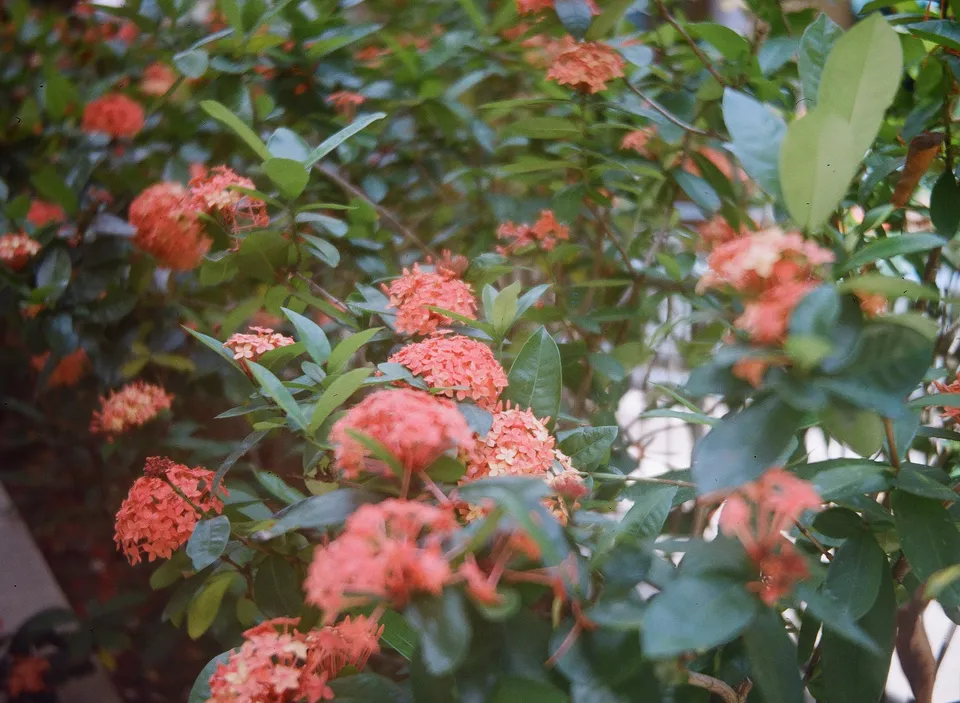
The budget film Kodak Gold 200 has been made available in 120 format this year. I wouldn't risk spamming a roll of the expensive Portra 400 on Semi Leotax before knowing how well it performs, so I spammed a roll of Gold 200 instead. C. Reginon Anastigmat seems coated from its bluish appearance but as a 70-year lens, the astigmatism and stray lights are so bad the color images look disgusting. This crap isn't even close to Agfa's triplet Color-Apotar of the same era.
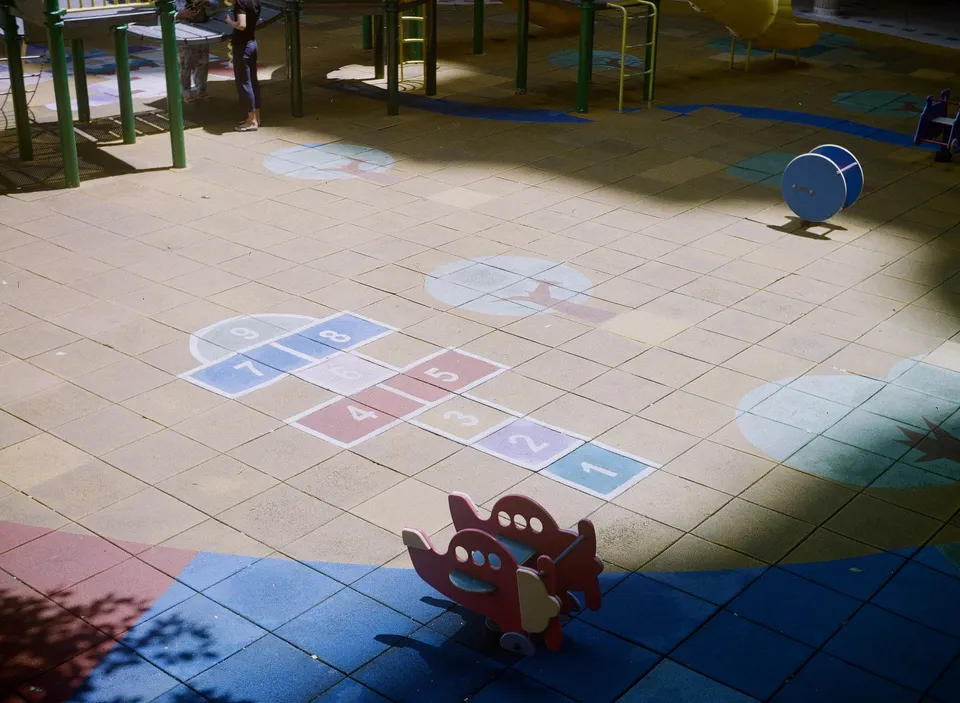
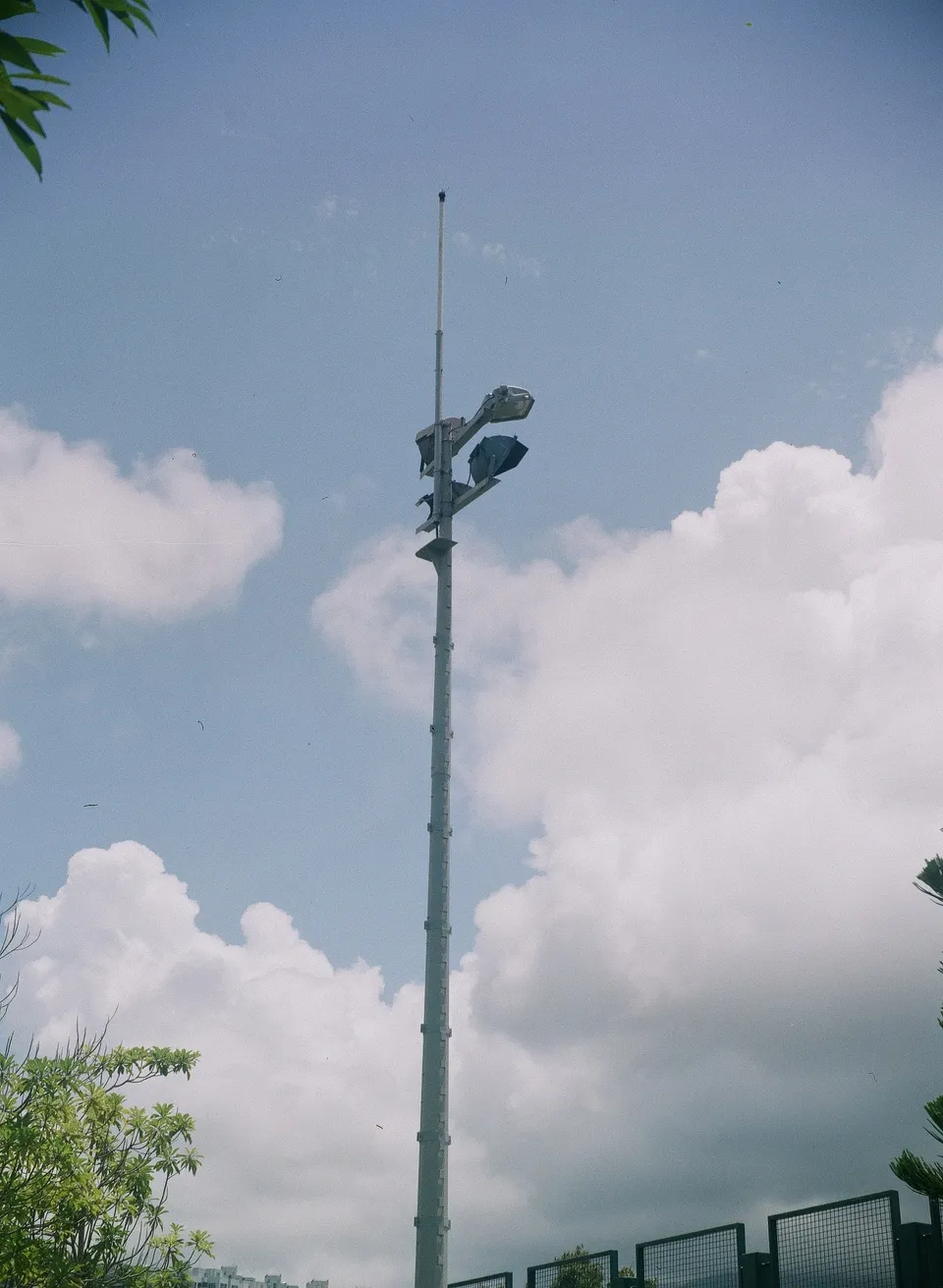
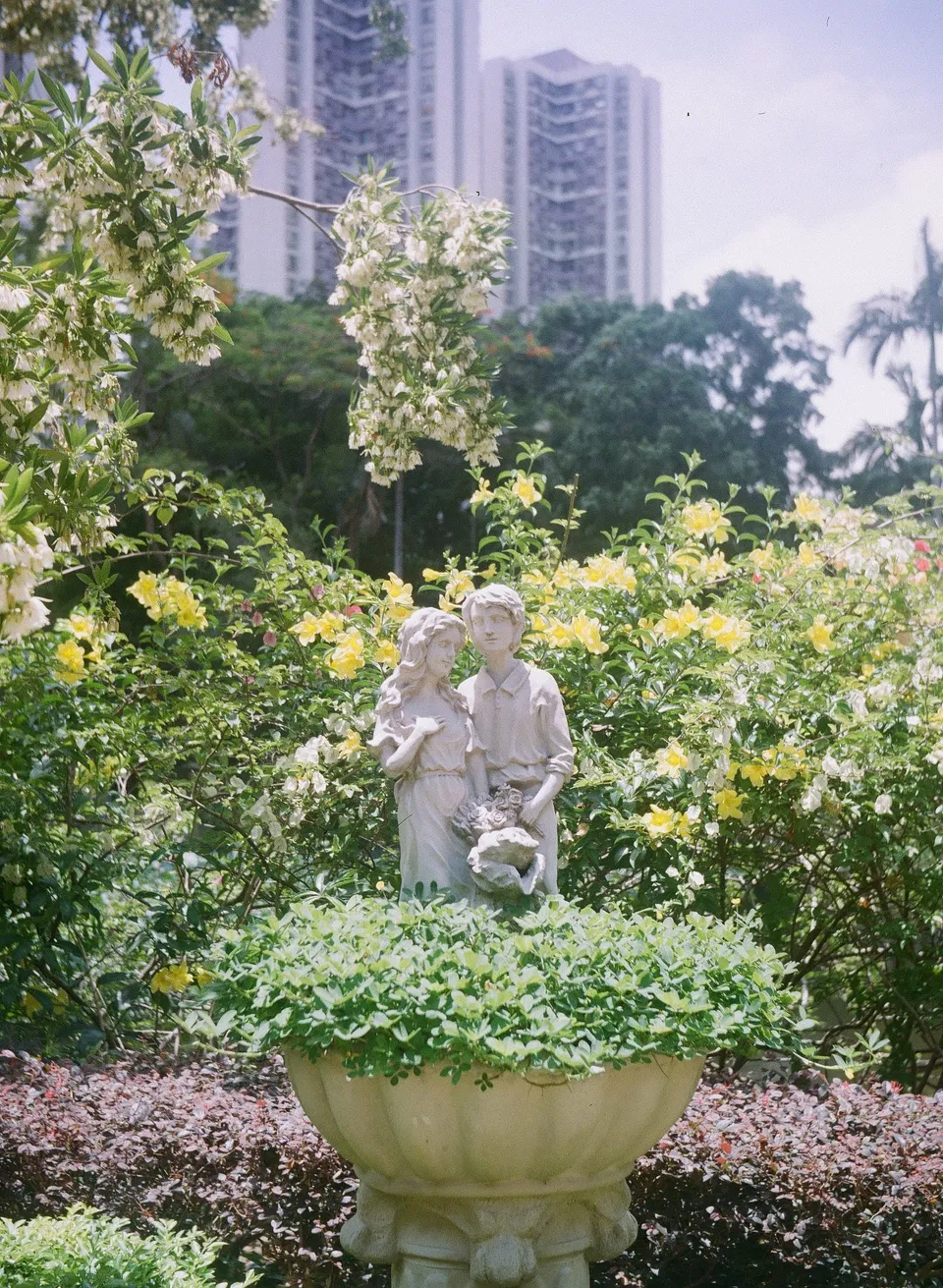
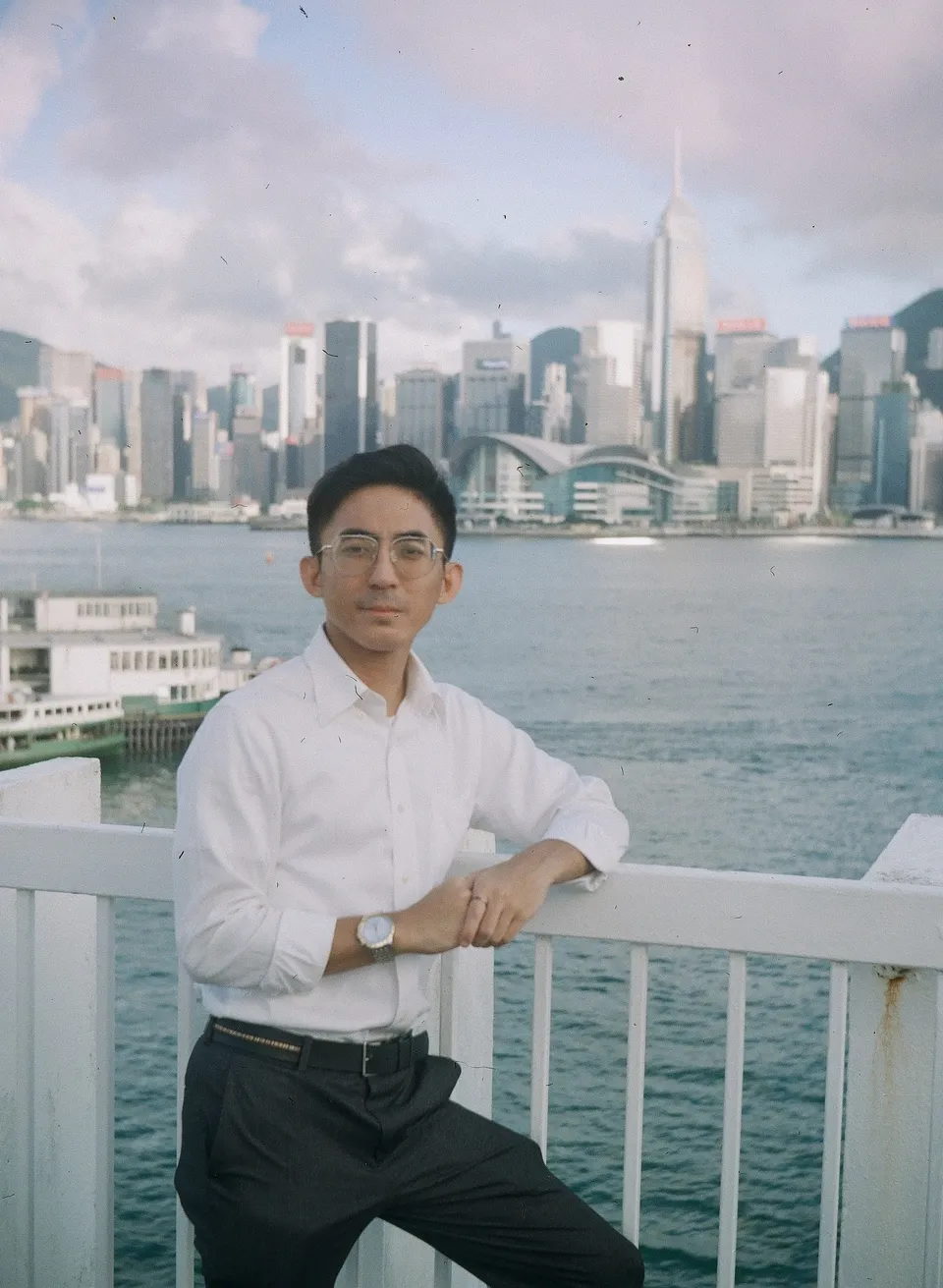
It may be the lab that messed the scan up especially in the saturation compartment. Or it could be the Gold 200 came fogged already. I won't know until I have shot another roll of color, perhaps a roll of something proper like Portra, or even Velvia that had gotten prohibitively expensive these days.
Anyways, at the time this camera was produced, black and white film was still the mainstream. So I went also spammed a roll of Fomapan 200 expired half a year ago (at half the market price…if this roll works I'ma hoard a bunch of that).
Nope—for a roll of bnw that's only expired for half a year this is disgusting.
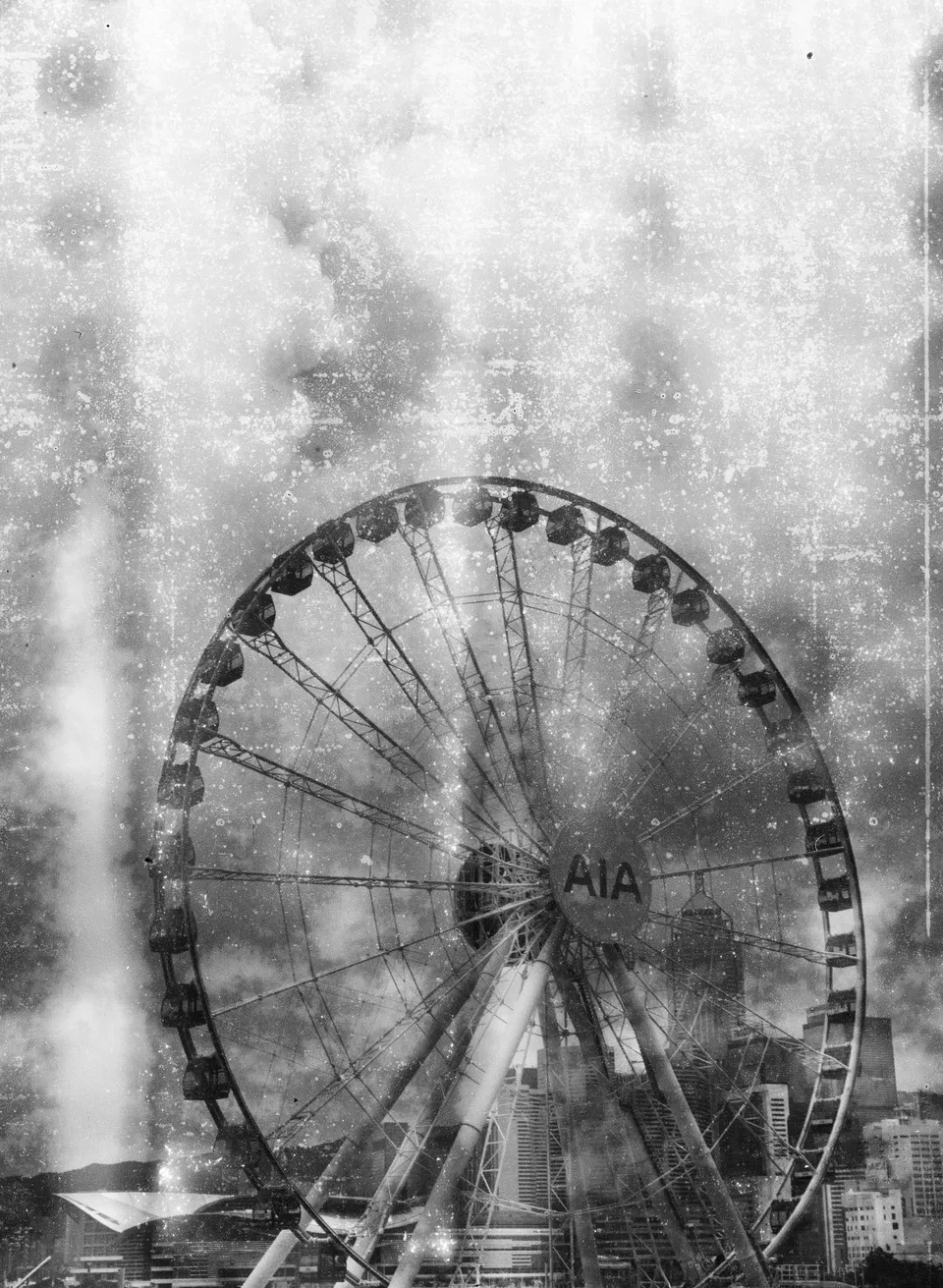
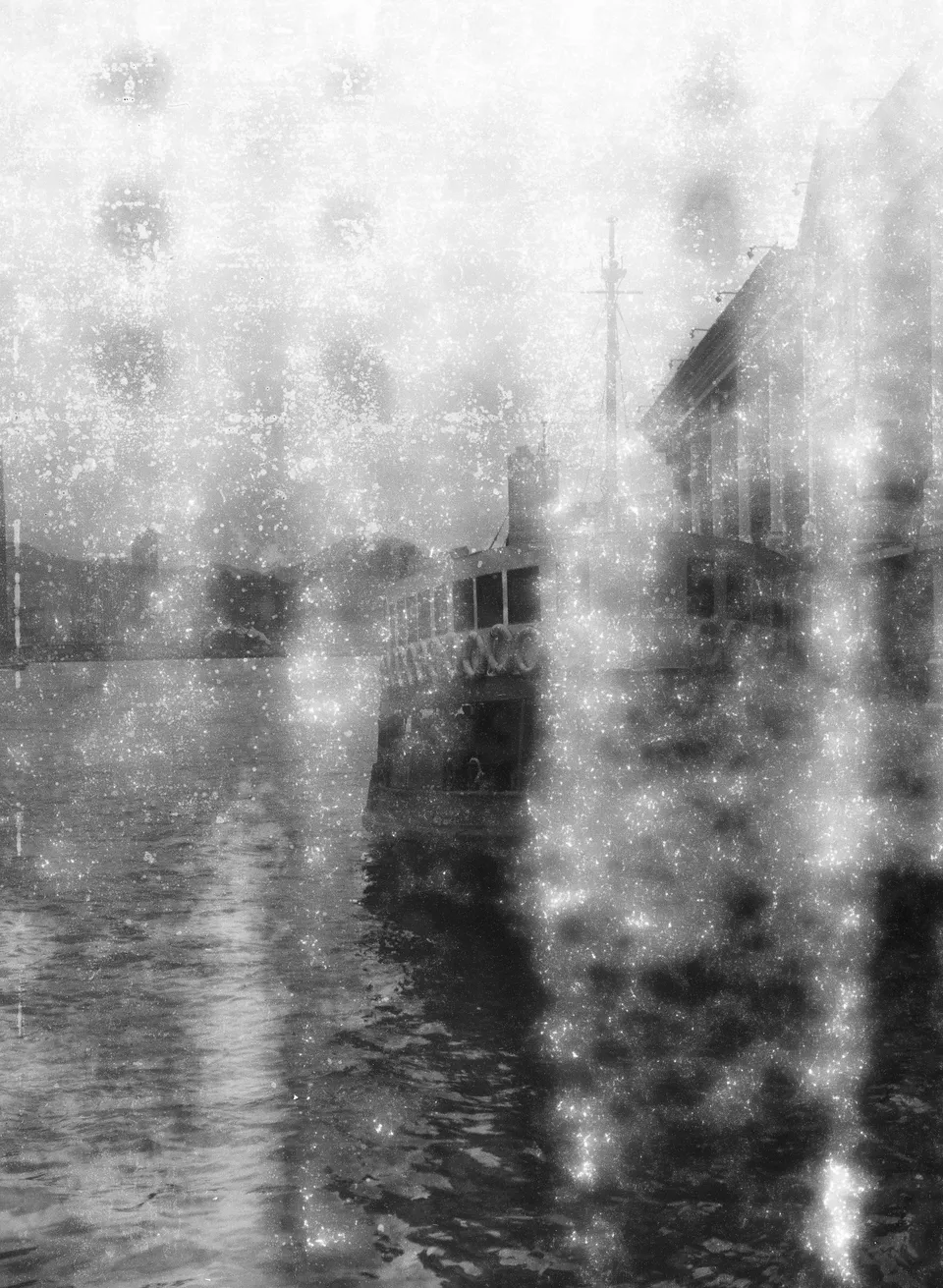
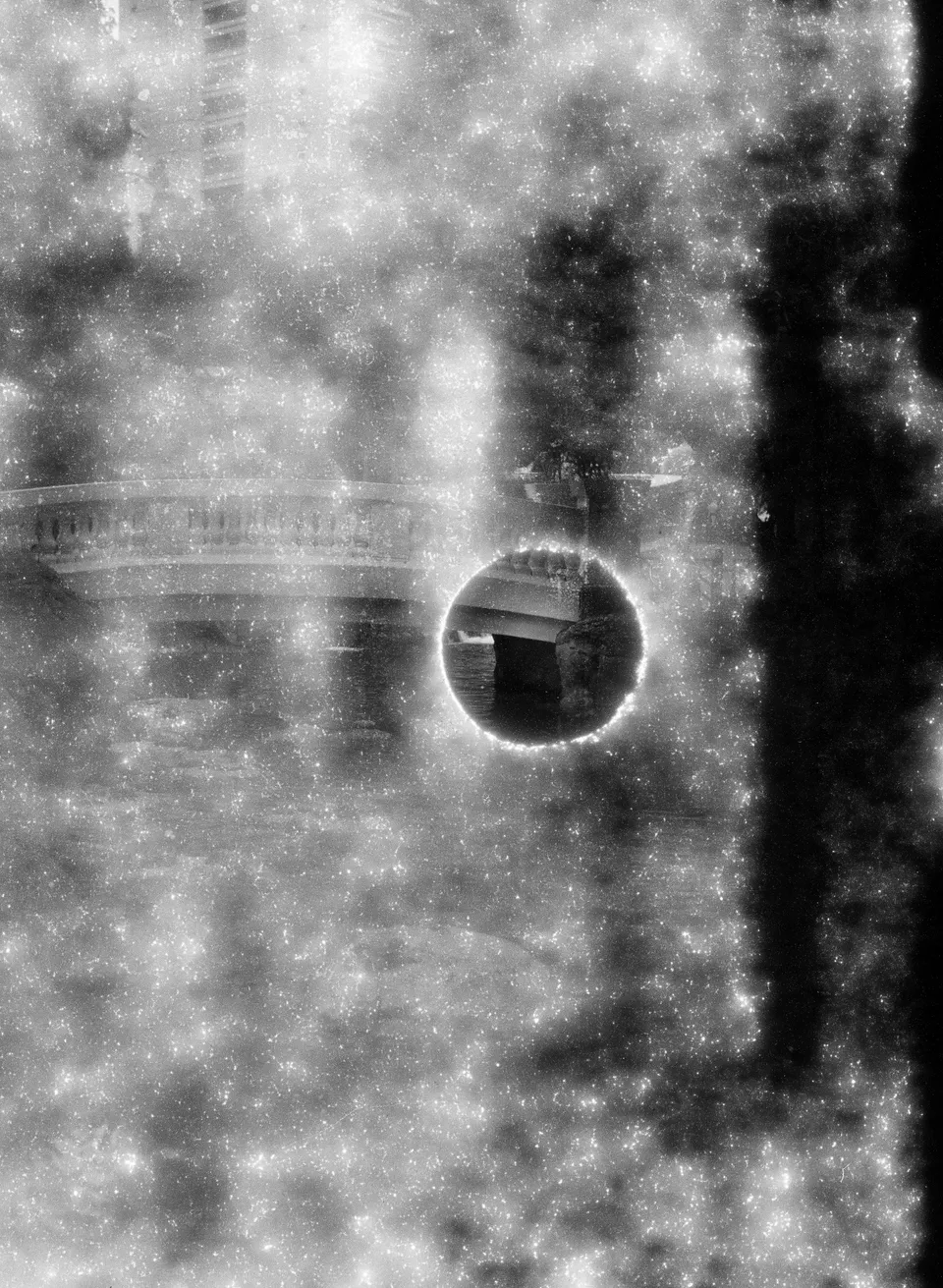
I got this camera quite cheaply online. No seller cares enough to clean or even test an old cameras like this. I got lucky this guy is selling off his dad's cameras that's been well-preserved: no fungus, haze or scratch, impossible from retail Japanese seller on auction site. These shameless people would say a fungus-infested hazy lens is in EXEC+++ condition.
At the end of the day, I love this camera for its compactness. There are still people who'd still CLA a camera like this at a premium, but if I were to pay the same price I would probably opt for those weirdly shaped Fujica 645 cameras.
——
Much later I put a roll of Shanghai GP3 100 through this camera to test out how bad the film is on a photowalk in Hong Kong Island. It was a sunny day so I got the chance to shoot at f/8 or even f/11, with only the rangefinder card as focusing aid yet some of the result was surprising good for the cheap Chinese film and this old camera.
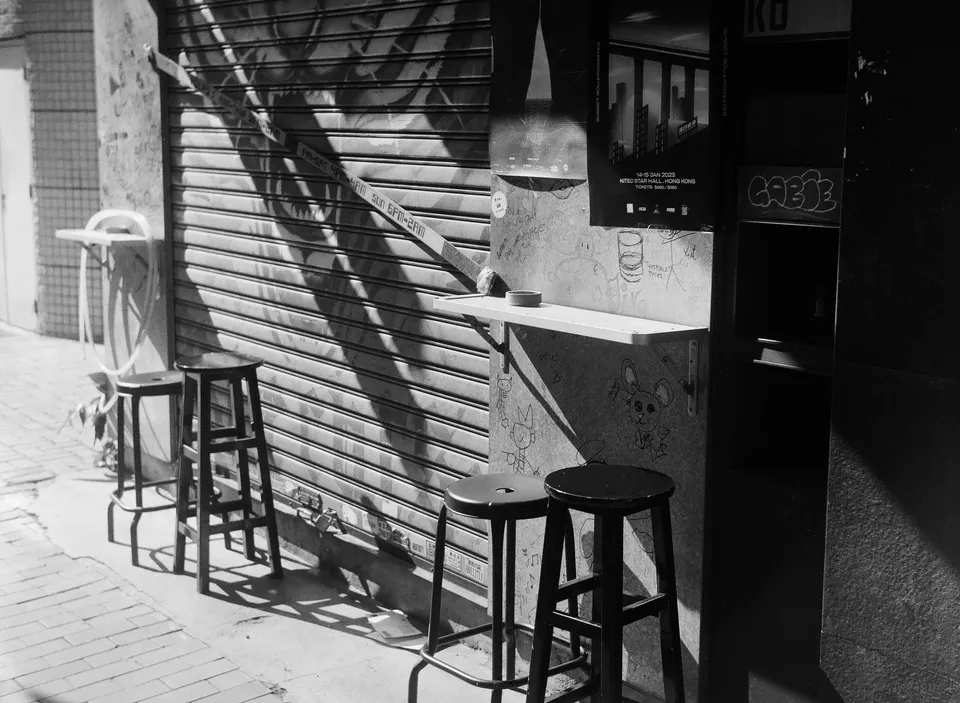
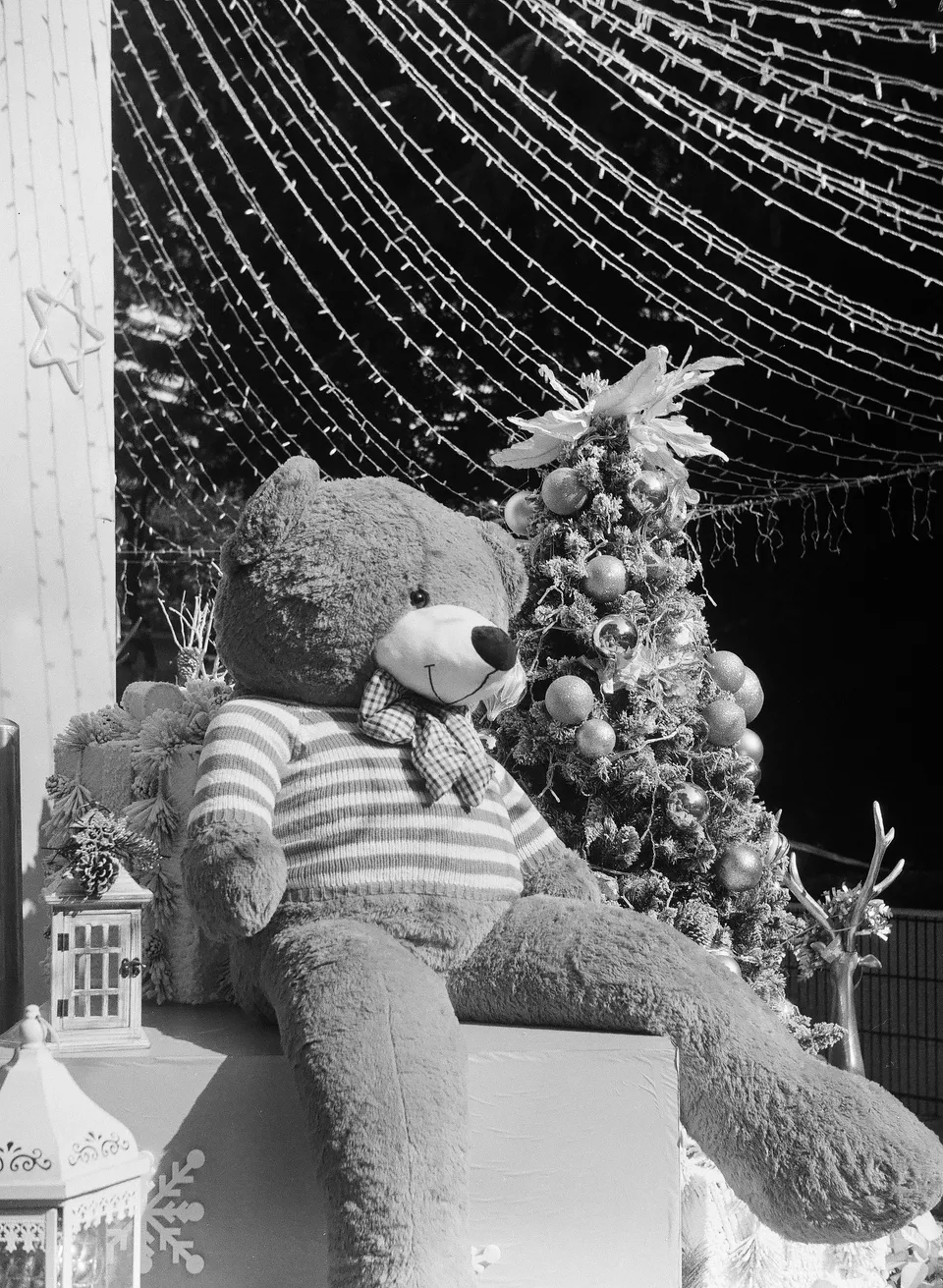
Actually, I have never had any good results shooting medium format handheld for any f-stops below 8. At high f-stop handshake may become apparent, yet at low f-stop, the image tend to look rather blurry due to the shallow depth of field and often erroneous focusing.
f/11 and 1/100s under bright sunlight would be a great combination to make this camera work!
